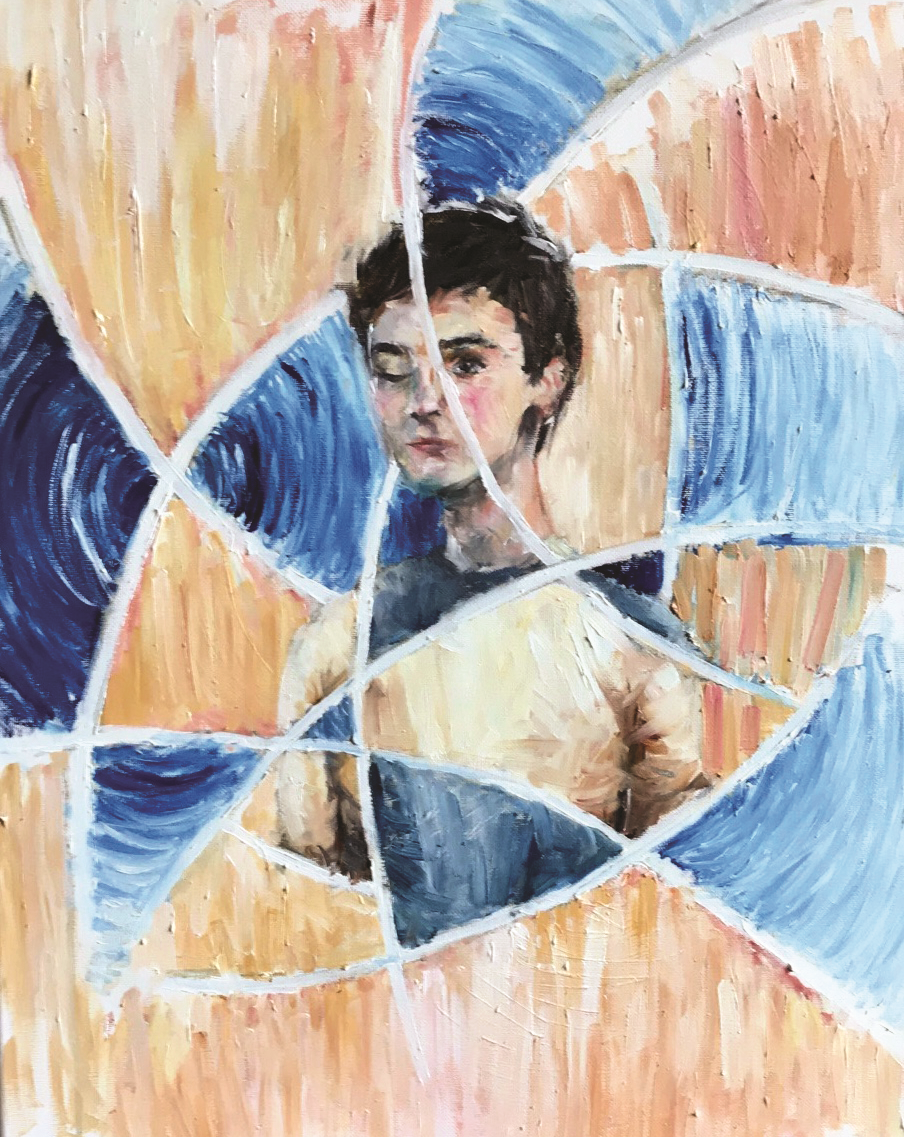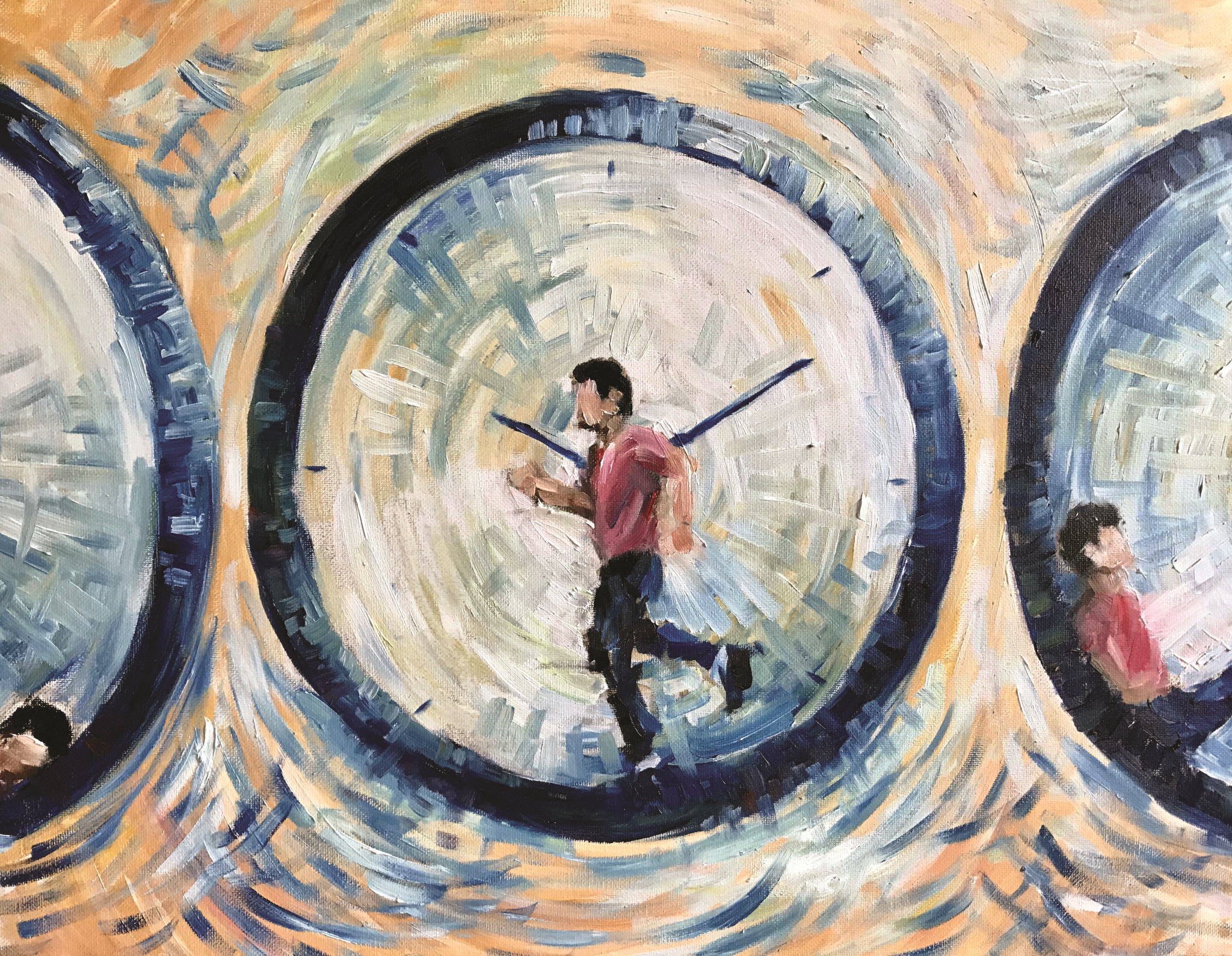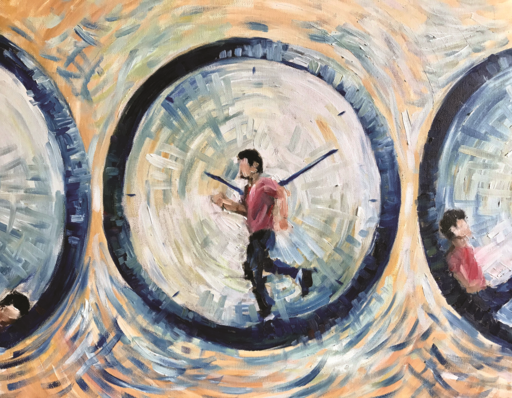It’s no secret that college students struggle to get sleep. Between juggling midterms, homework, and 8:30 a.m. classes, it isn’t just a stereotype that students are sleep-deprived. At times, this sleep deprivation is merely the symptom of a busy week. It’s momentary and doesn’t last forever. However, when this sleeplessness persists, it may be a sign of a sleep disorder that makes it difficult to achieve rest, regardless of having the time to do so. Insomnia is broadly characterized by difficulty initiating and maintaining sleep, along with unfulfilling or “nonrestorative” sleep. [1] Those diagnosed with the disorder experience these symptoms for a period of at least three months, even with ample opportunity for sleep. A recent review article showed that studies from 2000 to 2014 identified that 18.5% of college students have sleeping habits consistent with insomnia. [2] This is an astoundingly high rate, especially when compared to that of the general adult population, which is about 7.5%. [2] What is it about college students that make them so susceptible to sleep disorders like insomnia?

The Two-Process Model: An Overview of Sleep
Since the 1980s, scientists have considered sleep to work by a two-process model. The two-process model studies the interaction between the circadian rhythm and various homeostatic factors. The circadian rhythm, or “Process C,” is dictated by a structure in the hypothalamus called the suprachiasmatic nucleus (SCN). [3] The SCN receives signals prompted by the presence or absence of light and projects signals elsewhere in the brain to promote either sleepiness or wakefulness. In this way, the SCN effectively times sleep-wake cycles in terms of daylight. Sleep cycles are also regulated by homeostatic factors through “Process S,” which refers to the body’s rising inclination toward sleep the longer an individual is awake. [3]
Disruption to the circadian rhythm acts as a primary component in insomnia development. [4] This may be problematic for students, who have a longer circadian period than most adults: an average of 24.27 hours in teenagers and young adults versus 24.1 hours in adults. [5] A longer period for circadian rhythm causes a natural delay in the onset of sleep, making it difficult to fall asleep at the same time every night. While a disparity of only 0.17 hours between adolescents’ and adults’ circadian periods seems meager, the weekly accumulation of this shift in bedtime can lead to an overall loss of up to three hours of sleep on a given school night. [5] Light exposure moderates this shift in Process C. [6] Individuals with lengthier circadian rhthyms require light exposure earlier in the morning in order to advance the circadian oscillation. While this earlier light exposure is necessary for students to maintain their sleep timing, it isn’t always a realistic option because adolescents tend to have later sleep and wake cycles. [5] Sleep cycles geared toward waking and falling asleep later in the day can make rising early and getting the necessary light exposure challenging. This is just the tip of the iceberg when it comes to students’ susceptibility to insomnia-promoting sleep patterns.
There are currently a variety of possible models to explain insomnia, from biological mechanisms concerning sleep-related hormones to psychological theories about stress. One of these psychological theories is the diathesis-stress model. The term “diathesis-stress” indicates that individuals with certain predisposing factors are more likely to develop insomnia when stress is placed on their sleep schedule. The model proposes that insomnia may be derived from three main determinants: predisposing, precipitating, and perpetuating factors. [2] Predisposing factors refer to genetic or physiological characteristics that may put an individual at risk for developing the sleep disorder. For example, a predisposing factor might be a family history of insomnia, implying a hereditary susceptibility to the condition. Precipitating factors, on the other hand, are environmental or psychological stressors that might influence a person to develop abnormal sleeping habits. Perpetuating factors encompass any psychological, biological, or environmental circumstances that interrupt an individual’s ability to return to a normal, healthy sleep schedule. These determinants combine to explain how an individual may experience insomnia for a long period of time, even when the initial precipitating factors have been eliminated. [2]
This model identifies how common habits in the student lifestyle may contribute to the psychological factors behind student insomnia. For example, a common precipitating factor for students is their varying class schedules throughout the week. This environmental circumstance may cause students to shift their bedtimes from day to day, resulting in difficulty adjusting toward sleepiness each night. In terms of perpetuating factors, college students under academic pressure may experience enough psychological stress to keep them awake at night. This part of the student lifestyle preserves the disorder, as students may continue to struggle with falling asleep even if a precipitating factor, such as an irregular sleep schedule, were to cease. While the diathesis-stress model is useful in assessing the psychological perspective of insomnia, it lacks the neurobiological explanations that may be necessary for understanding the development and progression of the disorder in students.
The Neurocognitive Model & Hyperarousal
The neurocognitive model for insomnia combines the diathesis-stress model with components of neurophysiology. [4] The model suggests that insomnia is associated with hyperactive neural activity, or hyperarousal. Hyperarousal is one of the most widely accepted conditions known to contribute to insomnia. [3, 4] This term refers to the overstimulation of both the central and autonomic nervous systems, meaning it affects the brain and spinal cord as well as certain periphery functions of the nervous system, such as metabolic rate and the fight-or-flight response. Hyperarousal is typically assessed via physiological measures of stress response, such as varying heart rate, heightened presence of the stress hormone cortisol, or the rhythm of neural activity recorded with electroencephalogram scans. [7] The neurocognitive model also claims that thinking about having insomnia can lead to worse symptoms, as insomniacs may unintentionally develop sleep-preventing habits in response to this reflection. These habits are evident in certain maladaptive behaviors (daytime naps, alcohol consumption, etc.) that reinforce sleepless behavior, making them perpetuating factors in the progression of the disorder. [7]
College students are particularly susceptible to hyperarousal. According to an article published in the Journal of Adolescent Health, students are prone to this state of arousal because of developmental changes in the HPA axis. [5] The HPA axis, or hypothalamic pituitary adrenal axis, is the central stress response system. The axis works via neuroendocrine feedback loops that promote the production of stress-related hormones, such as cortisol. Adolescents become more vulnerable to the effects of this stress near sleep onset as their capacity for deep sleep diminishes past childhood. [5] This is due to adolescents’ transition toward a reduced threshold for cortisol during deep, slow-wave sleep. Being vulnerable to such effects of cortisol perpetuates these hyperarousal states among adolescents.

Social Jetlag
A more recent theory called “social jetlag” may also provide insight into insomnia in students. This theory is based on the idea that individuals have their own 24-hour cycles of high to low sleep propensity. [6] The term “social jetlag” describes the discrepancy between sleep timing for “work” days and “free” days, during which the individual’s circadian rhthym becomes out of sync with the environment. [8, 9] The theory articulates that this misalignment of alertness may augment hyperarousal at night, displacing sleep time and making it difficult for the person to initiate sleep. Social jetlag can be particularly difficult for students with late chronotypes. Late chronotypes refer to those with high sleep propensity at relatively later times than others. People with late chronotypes experience the largest adjustment from free days back to work days, as Western education schedules are typically geared toward earlier chronotypes. [8] This adjustment results in the individual accumulating “sleep debt,” which is the sleep deficit a person may amass due to waking early after acclimating to a late bedtime or by otherwise shortening natural sleep. [9] This phenomenon is highly relevant to college students, who tend to sleep late on weekends because of social gatherings and then attend early classes the following week.
It is important to note that while this particular theory may be applicable to students, it is only one component in understanding what derails college students’ sleep toward insomnia. While it is not a direct cause, social jetlag can be thought of as a perpetuating factor of insomnia, contributing to the chronicity of the sleep disorder by further disrupting students’ circadian rhythms.
Sleep Hygiene
It’s easy to neglect sleep with a stressful academic schedule. At times, it might seem like it’s better to prioritize precious study hours or downtime with friends. Yet, it’s the little things that can make a big difference in avoiding the pitfalls of sleep patterns associated with insomnia. This introduces the importance of sleep hygiene, which can be defined as any measure taken to improve an individual’s sleep quality or lessen behaviors that may derail sleep quality. [7] Some examples of sleep hygiene practices include establishing quiet sleep environments and adhering to regular wake and sleep times. Missteps in these sleep hygiene behaviors are capable of predicting the severity of insomnia. [10] These missteps involve arousal before bedtime, improper sleep scheduling, or inhabiting a disruptive sleeping environment, all of which are found to be positively associated with the severity of insomnia in college students. [10] So, though it’s tempting to scroll through Twitter before drifting off or to stay up late to chat with roommates, it isn’t a great idea to practice these habits before bed. Changes that minimize these behaviors, big or small, may be a good first step toward avoiding student insomnia.
References
- Diagnostic and statistical manual of mental disorders: DSM-5 . (2013). Arlington, VA: American Psychiatric Association.
- Jiang, X., Zheng, X., Yang, J., Ye, C., Chen, Y., Zhang, Z., & Xiao, Z. (2015). A systematic review of studies on the prevalence of Insomnia in university students. Public Health,129 (12), 1579-1584. doi:10.1016/j.puhe.2015.07.030
- Mai, E., & Buysse, D. J. (2008). Insomnia: Prevalence, Impact, Pathogenesis, Differential Diagnosis, and Evaluation. Sleep Medicine Clinics , 3 (2), 167–174. http://doi.org/10.1016/j.jsmc.2008.02.001
- Levenson, J. C., Kay, D. B., & Buysse, D. J. (2015). The Pathophysiology of Insomnia. Chest , 147 (4), 1179–1192. http://doi.org/10.1378/chest.14-1617
- Forbes, E. E., Williamson, D. E., Ryan, N. D., Birmaher, B., Axelson, D. A., & Dahl, R. E. (2006). Peri-Sleep-Onset Cortisol Levels in Children and Adolescents with Affective Disorders. Biological Psychiatry,59 (1), 24-30. doi:10.1016/j.biopsych.2005.06.002h=
- Borbély, A. A., Daan, S., Wirz-Justice, A., & Deboer, T. (2016). The two-process model of sleep regulation: A reappraisal. Journal of Sleep Research,25 (2), 131-143. doi:10.1111/jsr.12371
- Hershner, S., & Chervin, R. (2014). Causes and consequences of sleepiness among college students. Nature and Science of Sleep, 73. doi:10.2147/nss.s62907
- Smarr, B. L., & Schirmer, A. E. (2018). 3.4 million real-world learning management system logins reveal the majority of students experience social jet lag correlated with decreased performance. Scientific Reports,8 (1). doi:10.1038/s41598-018-23044-8
- Wittmann, M., Dinich, J., Merrow, M., & Roenneberg, T. (2006). Social Jetlag: Misalignment of Biological and Social Time. Chronobiology International,23 (1-2), 497-509. doi:10.1080/07420520500545979
- Gellis, L. A., Park, A., Stotsky, M. T., & Taylor, D. J. (2014). Associations Between Sleep Hygiene and Insomnia Severity in College Students: Cross-Sectional and Prospective Analyses. Behavior Therapy,45 (6), 806-816. doi:10.1016/j.beth.2014.05.002
